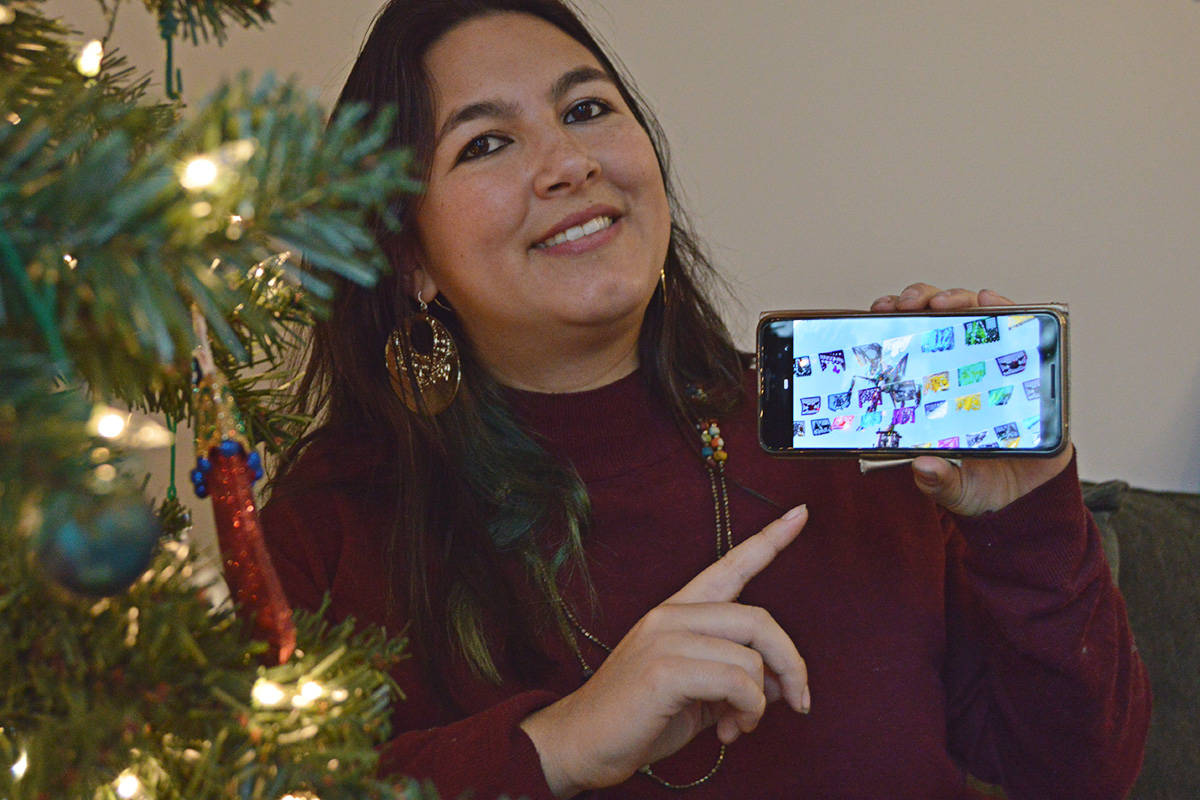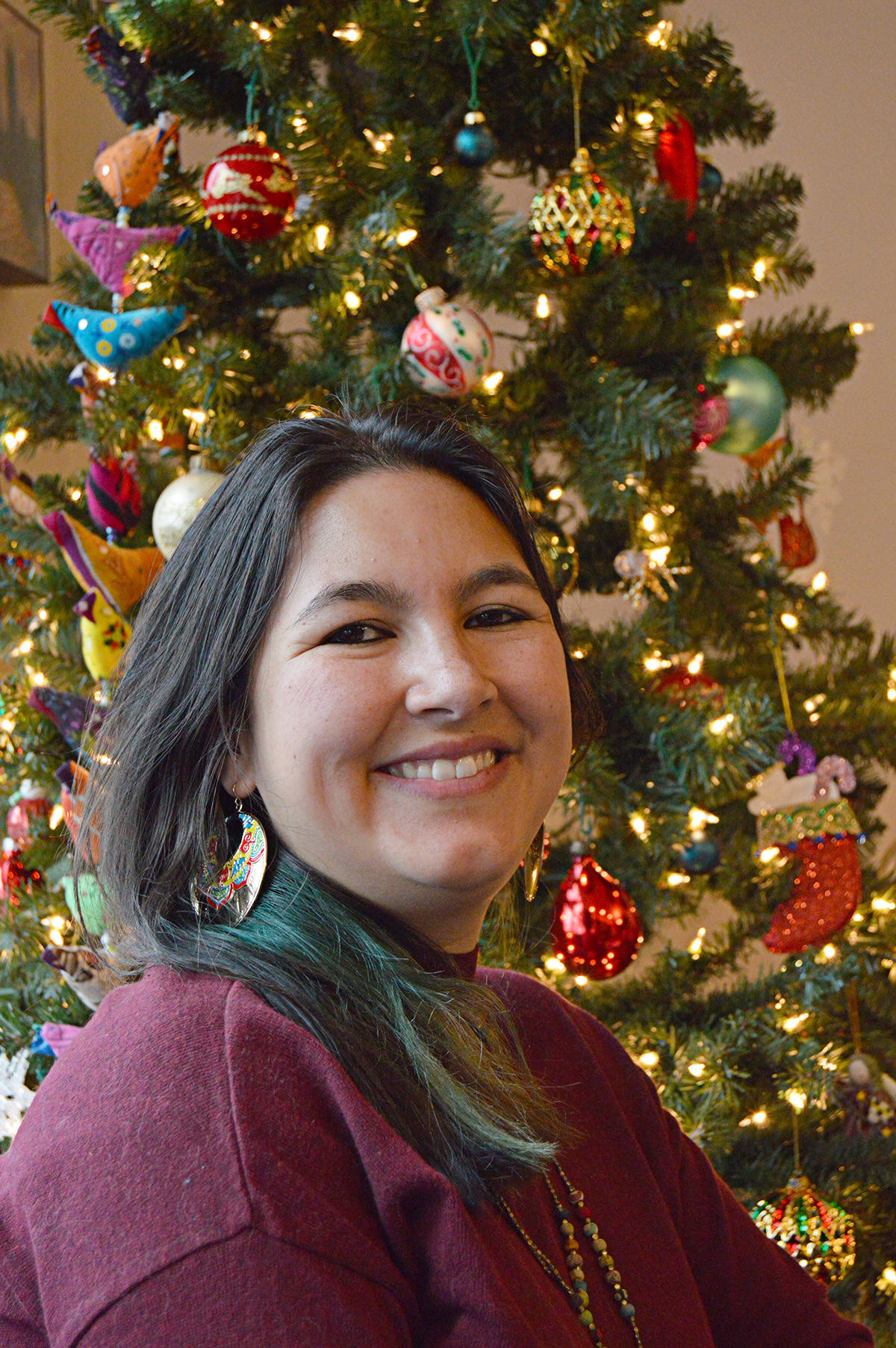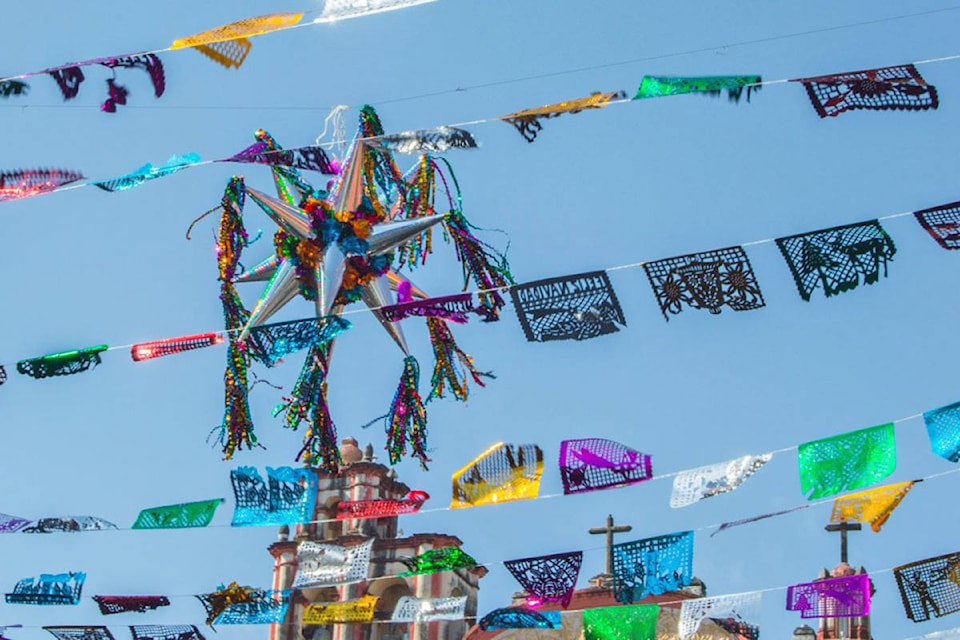In Mexico, Christmas celebrations include lots of praying, parties, gifts, and piñatas. Best of all, they last for almost a whole month.
You know the celebration season has started on Dec. 12, when hundreds of thousands of pilgrims arrive in Mexico City to honour the Virgin of Guadalupe. This is usually the time to set up our Nativity scene at home.
Four days after that, the Posadas start. From Dec. 16 to the 24, these parties are an opportunity to remember the days before the Baby Jesus’ birth. A couple dresses up as Mary and Joseph, and the neighborhood’s houses are set up to represent the inns at Belén [Bethlehem]. Each night, we re-enact Mary and Joseph’s request for shelter.
The couple, followed by their neighbours, stop at a new house each night carrying candles and singing. The residents of the house answer Mary and Joseph’s song by singing in return that they are welcome inside. The couple and the procession are then allowed to come inside and pray at the Nativity scene.
After praying, it’s time for the party! We break the piñata of seven cones (that represent the seven capital sins) filled with traditional candies and seasonal fruits. We eat, drink, play music, and repeat this for each night. On the night of Christmas Eve, we put the figure of the Baby Jesus in our Nativity scene.
Santa Claus is relatively new to Mexican traditions, and the kids who expect him can open their presents on Christmas morning.
The Christmas dinner varies in each region, but the most popular menus are cod, turkey, and tamales. The thing you can expect at every Mexican Christmas dinner is lots of relatives.
On New Year’s Eve, we gather with friends and family and party all night long. At midnight, we eat 12 grapes and make a wish on each of them for the New Year. To wish for a year filled with travels, we do a lap around the house carrying our suitcases. We also wear underwear of different colours depending on what we want the most for the upcoming year: green for health, yellow for money, red for love, and black for sex.
We gather one more time on Jan. 6 to celebrate Día de Reyes, or the Three Wise Men Day. Kids leave a shoe under the Christmas tree the night before and receive a present from the Three Wise Men inside it.
At night, we have the Rosca de Reyes, a round cake decorated with dry figs and cherries, and with a small figurine of the Baby Jesus inside. Each guest cuts their own slice of rosca, and the one getting the figurine is in charge of dressing Baby up and hosting a party at their home on Feb. 2.
Mariana Arámburu, Langley City
.


